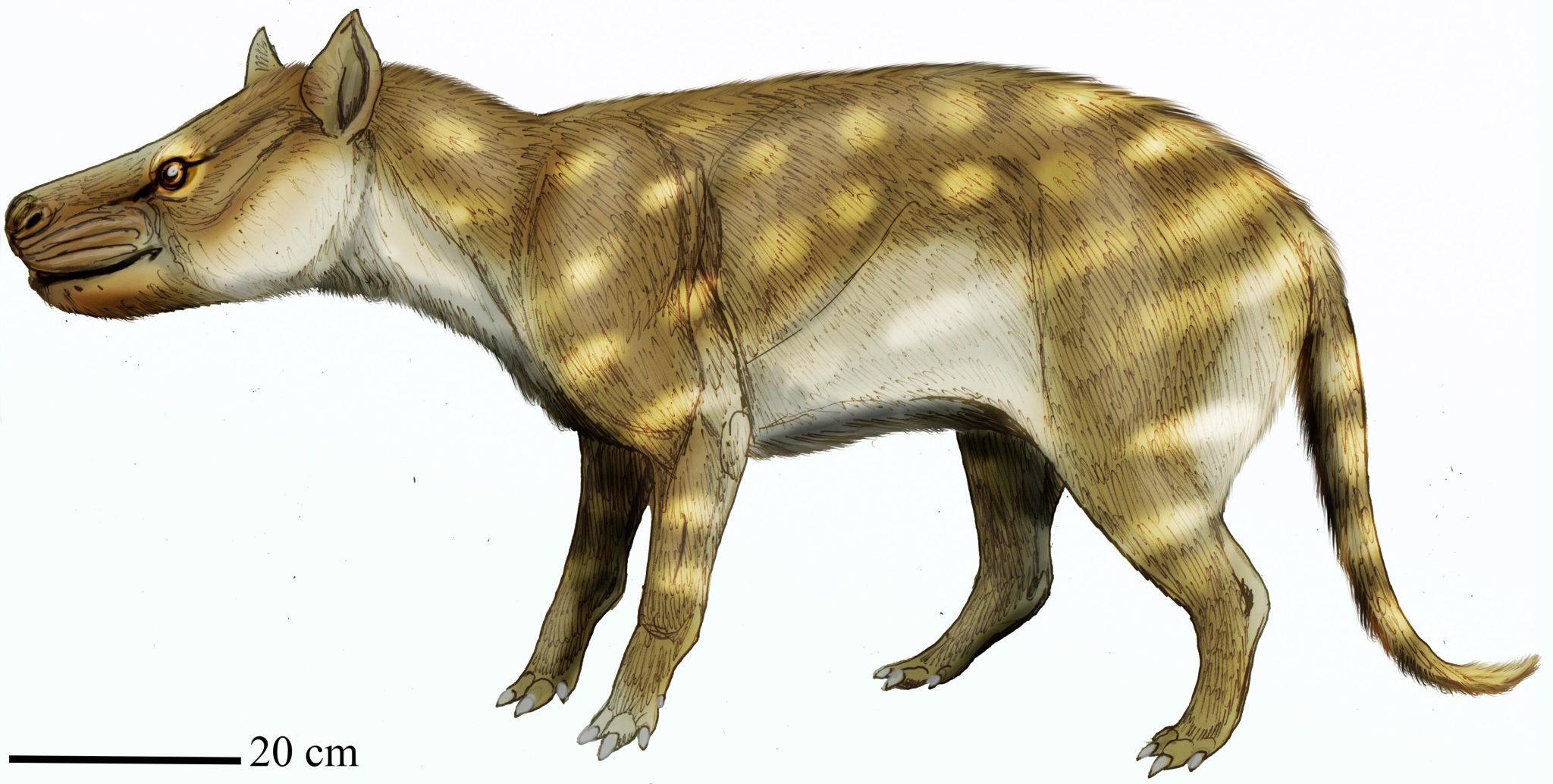🦴 This meat-eater ate bones to survive climate warming
Published by Adrien,
Source: Palaeogeography, Palaeoclimatology, Palaeoecology
Other Languages: FR, DE, ES, PT
Source: Palaeogeography, Palaeoclimatology, Palaeoecology
Other Languages: FR, DE, ES, PT
Follow us on Google News (click on ☆)

Study of Dissacus praenuntius fossils, a coyote-sized omnivore, providing clues about responses to environmental changes.
Credit: Дибгд, CC BY 4.0
During the Paleocene-Eocene Thermal Maximum, temperatures increased rapidly. This period lasted approximately 200,000 years. Ecosystems were profoundly disrupted by these climate changes. Prey availability decreased, forcing animals to adapt to survive.
Tooth analysis shows that Dissacus shifted from a carnivorous diet to bone consumption. Before the warming, its diet resembled that of modern cheetahs. Afterward, microwear indicates consumption of hard foods, similar to hyenas. This change suggests adaptation to resource scarcity.
Dietary flexibility was crucial for this species' survival. Generalist animals, capable of varying their diet, better withstood environmental stresses. This observation applies to current species facing climate change. Specialists, like pandas, might encounter more difficulties.
Despite its adaptability, Dissacus eventually went extinct after 15 million years. Competition with other species and prolonged environmental changes likely caused its disappearance. This highlights that even successful adaptations don't guarantee long-term survival.
Lessons from the past help anticipate future biodiversity responses. Understanding how ancient ecosystems reacted offers perspectives for modern conservation.
What is the Paleocene-Eocene Thermal Maximum?
The Paleocene-Eocene Thermal Maximum (PETM) is a period of rapid climate warming that occurred approximately 56 million years ago. It lasted nearly 200,000 years and caused a global temperature increase of 5 to 8 degrees Celsius (9 to 14 degrees Fahrenheit).
This period is marked by massive carbon release into the atmosphere, likely due to volcanic activity or methane hydrate melting. Carbon dioxide levels increased significantly, similar to those observed today.
The PETM caused mass extinctions and species migrations, but also evolutionary adaptations. It serves as a natural analog for studying current climate change impacts on ecosystems.
How does dental microwear analysis work?
Dental microwear analysis is a paleontological method that examines tiny marks on fossil teeth. These marks, such as scratches and pits, are caused by chewing specific foods.
By comparing these patterns to those of modern animals with known diets, researchers can deduce the dietary habits of extinct species. For example, smooth surfaces indicate consumption of tender meat, while abraded surfaces suggest hard foods like bones.
This non-destructive technique allows reconstruction of dietary habits without damaging precious fossils. It's widely used in paleoecology to understand the evolution of feeding behaviors.